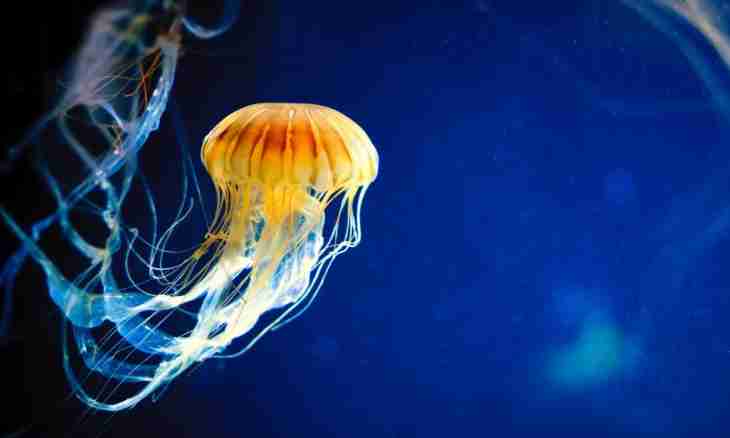The jellyfish is the representative of type coelenterates whom there are more than 9000 types. Most of them is widespread in the seas. Meet as the attached forms are polyps, and free-floating organisms – jellyfishes.
Instruction
1. All coelenterates including the jellyfish is multicellular two-layer animals. They have an intestinal cavity of a body and beam (radial) symmetry. The intestinal cavity is reported with the environment only through an oral opening. Shoots of nervous cages form a nervous texture. Coelenterates live only in water, mainly in the seas, lead an injurious life, and for catching of production and protection against enemies use strekatelny cages.
2. The jellylike body of a jellyfish reminds an umbrella. On a bottom side the mouth, and at the edges of a body – mobile tentacles in the middle is located. Movement of a jellyfish in water thickness reminds "jet propulsion": she gathers water in an umbrella, then sharply reduces it and throws out water outside thanks to what she moves the convex party forward.
3. Along with all coelenterates of a jellyfish – the predators killing the victim with poisonous strekatelny cages. At contact with some jellyfishes (for example, the krestovichok living in the Sea of Japan) the person can get burn.
4. And here such coelenterates as polyps, do not swim in water, and sit not movably in gorges of rocks. Usually they have bright coloring and several nimbuses of short thick tentacles. Sea polyps trap the victim, remaining on one place or slowly moving on a bottom. As food to them serve inactive animals which predators capture tentacles.
5. Many sea coelenterates form colonies. The young polyp formed of a kidney does not separate from a maternal organism as at a freshwater hydra, and remains attached to it. Soon he begins to vypochkovyvat new polyps. In the colony which is formed thus the intestinal cavities of animals are reported among themselves, and the food caught by one of polyps is acquired by all. Often colonial polyps become covered by a limy skeleton.
6. In the tropical seas in shallow water the colonial polyps can form dense settlements – coral reeves. These colonies covered with a powerful limy skeleton strongly interfere with navigation.
7. Often such corals settle along island coast. During the lowering of a seabed and immersion of the island in water coelenterates, continuing growth, keep at a surface. Subsequently characteristic rings – atolls are formed of them.
